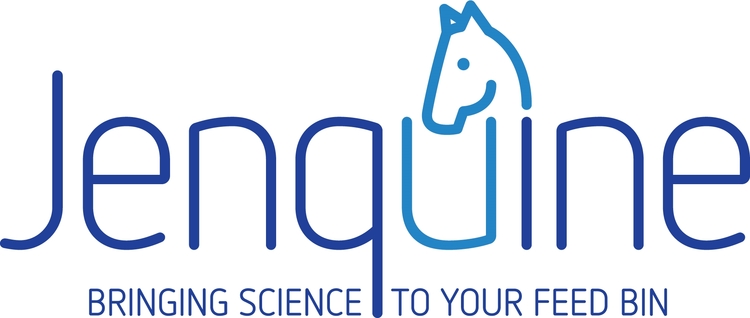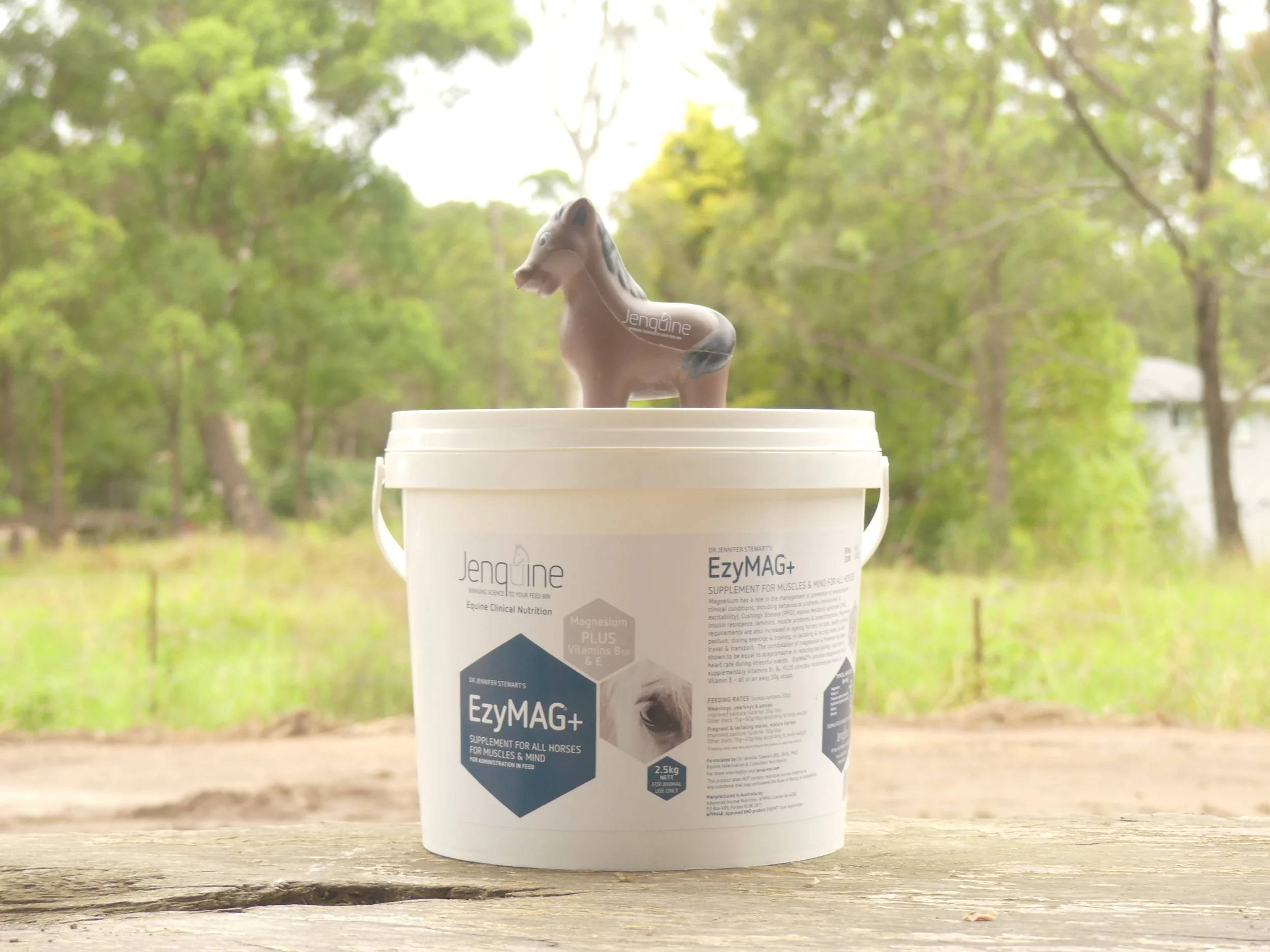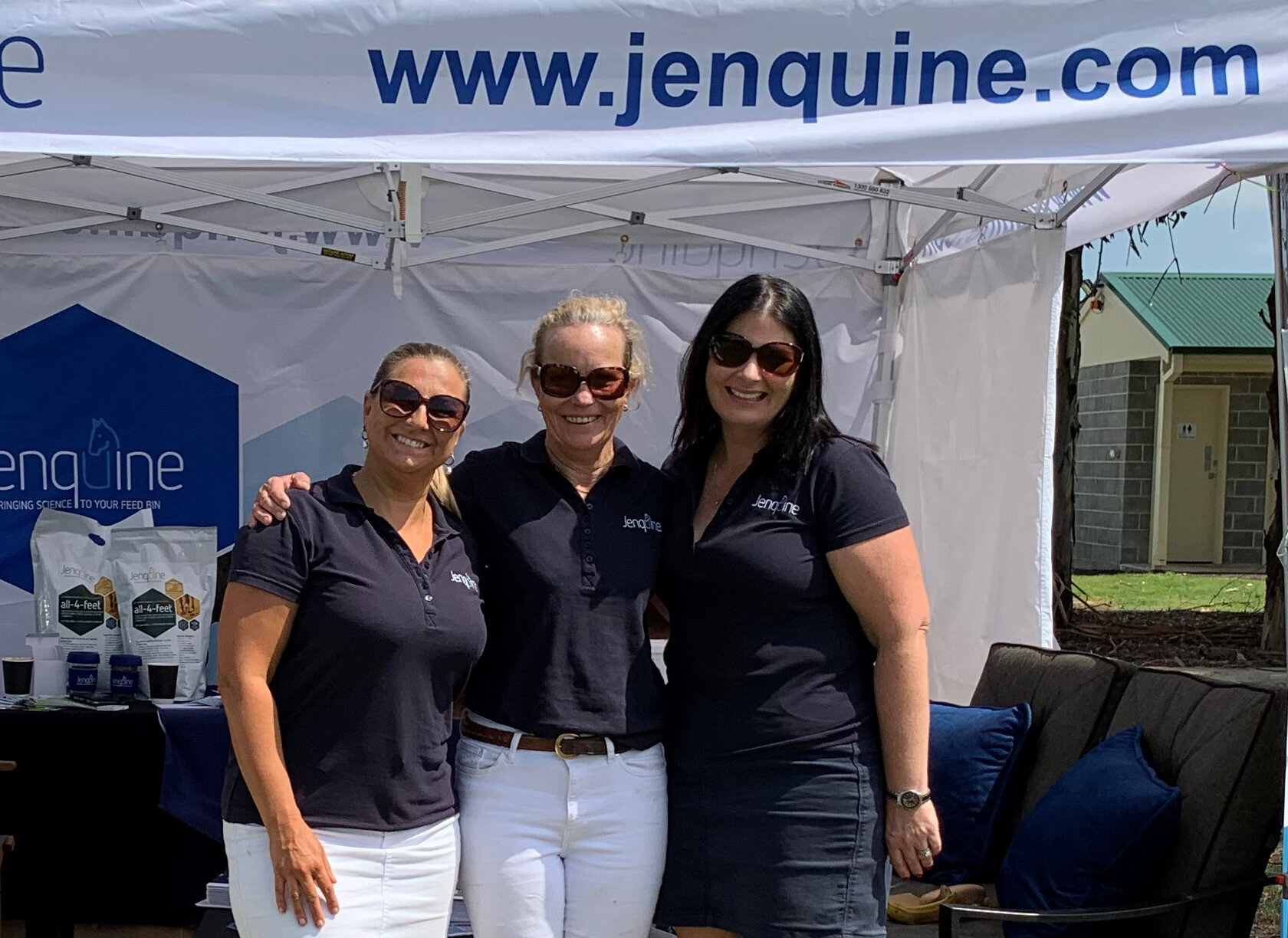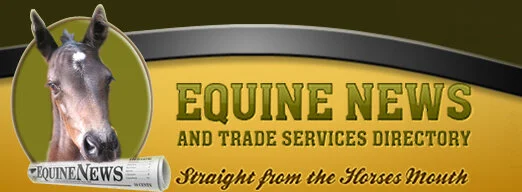The horse is a strange paradox of strength and acquiescence — and this presents profound challenges for those with responsibility for their welfare. Paramount in this obligation are owners, breeders, trainers and veterinarians. Our team combines expert veterinary knowledge with the passion of lifelong horse owners.
Read what some of our customers have to say about us here.
JENQUINE COMPANY PROFILE AND PRODUCTS
After obtaining a degree in veterinary science and PhD, Dr Jen Stewart spent 40 years as an equine veterinarian, including 10 years as
the equine nutritionist with Mitavite.
During this time, Jen started developing premium formulas for studs, trainers and feed companies in Australia and around the world. She regularly consults to leading International studs and trainers - as well as owners and riders from all equestrian disciplines - in New Zealand, Australia, South Africa, Japan and India. Jen has spent a fair bit of time researching and being involved in nutritional management of developmental orthopaedic diseases, colic, tyingup, laminitis, performance problems, post-surgery, rehabilitation and other conditions. Combining all of Jen’s experience and wanting to bring science to your feed bin Jenquine was created, where the best evidence-based nutrition supported by veterinary and scientific research is provided.
Jenquine is at the cutting edge and provides quality ethical products which have been tested with extensive clinical field trials by veterinarians and horse owners. Our products are formulated and produced in Australia in audited, APVMA licensed and ISO-compliant facilities. Jenquine also offers veterinary clinical diet-analysis.
Diet-analysis is frequently used by nutritionists, veterinarians and horse owners - and there are a number of computer-based, diet-analysis software packages available. These programs simplify diet evaluation but should be primarily used as a guide, not the ultimate answer. Care must be taken in interpretation of their output. The NRC (2007) values upon which many diet analyses are based, are minimum, average intakes to sustain life in an average healthy horse - making the results applicable to less than 50% of horses. In reality, requirements vary considerably and horses with a range of veterinary clinical conditions have increased or decreased requirements.
Recognising the ‘one-size-fits-all’ approach does not work in every situation, we have progressed spreadsheet-based diet-analyses to include our expanding knowledge of equine clinical nutrition, genetic potential, growth disorders and performance. Jenquine incorporates NRC (2007) guidelines with research in the 13 years since the 2007 publication, results from the German Equine Feeding Standards, lnstitute National de la Recherches Agronomique INRA, and our own databases.
Horses that benefit from in-depth dietary analysis include: pregnant mares and growing horses, those at risk for or affected by veterinary clinical conditions such as arthritis, behavioural issues, body composition concerns, convalescence, Cushings disease (PPID), dental conditions, developmental orthopaedic diseases (DOD), diarrhoea, endocrine problems, growth monitoring/ management, injuries, insulin resistance (IR), lack of muscle and topline, laminitis, muscle problems (tying-up/recurrent exertional rhabdomyolysis/EPSM/PSSM), orphan foals, poor hoof quality, performance problems, rehab post-injury or surgery, stomach ulcers and skin conditions.
Jenquine all-4-feet®:
It is a fundamental principle of nature that every horse and pony requires the same basic nutrients. The total amount required varies with age, breed, body weight, clinical conditions, exercise intensity, growth and reproductive status – but the essential nutrients are the same. Horses in work require the same nutrients as spelling or growing horses, broodmares, convalescing or aged horses and ponies - but in larger amounts. It is also a fundamental principle that the more a horse eats, the more nutrients they take in. Pregnant mares and growing, hardworking horses simply need to be fed more of the same nutrients to ensure that their increased requirements are met.
Jenquine all-4-feet® has been developed, trialled and tested by veterinarians and nutritionists for all horses. Formulated to help protect growth, performance, health and soundness through improved nutrition, Jenquine all-4-feet® is a concentrated feed for all horses and ponies - and their FEET. High in biotin, omega 3, amino acids, vitamins and minerals and low in starch and sugar, all-4-feet® is based on vegetable protein meals and contains no grain or grain by-products (eg millrun, hominy meal, bran, pollard) which can contain high levels of starch and sugar.
It is especially suitable for those with or at risk of inflammatory conditions - and whenever a low starch/sugar/NSC diet is indicated. It removes the need to feed multiple supplements (except on veterinary advice); can replace manufactured feeds; be added to any roughage/grain-based/manufactured feed diet when recommended daily intakes are not being met or for horses with increased needs, and is especially suitable for horses with veterinary clinical conditions.
Jenquine EzyMAG+®:
Is a supplement for muscle and mind for all horses. Magnesium has a role in the management or risk reduction of several equine clinical conditions, including behavioural problems (nervousness and excitability), Cushings disease (PPID), equine metabolic syndrome (EMS), insulin resistance, laminitis, muscle problems and osteochondrosis.
Magnesium requirements are also increased in ageing horses; on lush, rapidly growing pasture; during exercise and training; in lactating and cycling mares, and with travel and transport. Some mares and fillies are more prone to twitchiness, flighty behaviour, muscle pain and tying up when in-season and this has been associated with an hormone-induced fall in blood magnesium levels. Muscle pain, nervousness and tying-up are all found in horses with a subclinical magnesium deficiency, and any horse that ties-up can benefit from extra magnesium in their diet.
Young horses, especially those growing rapidly, are at risk of developmental bone disorders. First described mid last century by the American Quarterhorse Association as DOD, this syndrome mostly occurs with fast, rapid growth. Several studies found that supplements containing magnesium reduced OC incidence. It also advisable to ensure that diets for insulin-resistant horses and ponies at least meet the maintenance requirements and many veterinarians recommend 10g of magnesium per day.
For all horses and especially pregnant mares, young and older horses the interactions between magnesium, Vitamin E and the immune system are relevant. In pregnant mares this combination has been shown to improve the quality of colostrum, and in older horses, they repair some of the age-related changes in the immune system and increase killing capacity of white blood cells. Jenquine EzyMAG+® is intended to address subclinical deficiencies, the diagnosis of which is often difficult and requires urine clearance tests - but the clinical signs are recognisable. As with any nutritional deficiency, there are individual variations but most equine diets are deficient in magnesium and most horses benefit from supplementation.
Jenquine Bone Formula Forte®
Is a unique combination of organic and inorganic calcium for horses on diets that often have an unbalanced calcium:phosphorus ratio (grain and branbased diets and roughages with a high phosphorus content such as grassy/oaten and wheaten chaff or hay), those on medication for gastric ulcers and for horses and ponies grazing oxalatecontaining pastures. Grasses like kikuyu, panic, setaria, buffel and other sub-tropical species can contain high levels of oxalates. The reason two forms of calcium are included in Jenquine Bone Formula Forte® is because there are two types of oxalates in the grasses – one type (called soluble oxalates) bind ‘loosely’ to sodium and potassium. Because these bonds are not tight or strong, sodium and potassium oxalates are soluble ie they easily dissolve in the horses’ stomach, releasing the sodium and potassium from the oxalate. The horse can absorb the free sodium and potassium.
The other type of oxalate is tightly bound calcium-oxalate. Calcium-oxalate isn’t soluble, it doesn’t dissolve and the calcium remains tightly held by the oxalate, passing out unaltered into the manure. This causes a calcium deficiency that over time leads to osteoporosis (also known as nutritional secondary hyperparathyroidism, osteodystrophia fibrosis and ‘bighead’). Clinical signs of a calcium deficiency and generalised osteoporosis range from watery nasal discharge; mild swelling of the distal pasterns; facial distortion; sinusitis; upper respiratory tract noise; difficulty passing a stomach tube; dental pathology; ill-thrift; intermittent, shifting lameness; swelling of the maxilla and mandible (a ‘bighead’ is found in only ~20% of horses affected by oxalates and osteoporosis); hypocalcaemia and pregnancy tetany; tendon and ligament injuries and increased incidence of spontaneous fractures.
Because only around 20% of horses show signs of ‘bighead’, it’s common and easy to assume the horse doesn’t have a calciumdeficiency problem if there is no head swelling/enlargement. Bighead is a relatively uncommon sign (found in only 1 out of 5 affected horses). Once the head changes occur, the whole skeleton will have some degree of osteoporosis. More common signs that a problem is present and progressing are those of generalised osteoporosis: behaviour change; dental/chewing problems; lameness that may be vague, intermittent or shifting; poor coat; reduced voluntary movement; reluctance to perform; shortened stride; spontaneous fractures; tendon and ligament weaknesses and weight loss.
Although insoluble oxalate and calcium deficiency (calciumoxalate) is the major problem, soluble oxalates can also cause problems – when they dissolve and become free in the stomach they can form tight bonds with any calcium in the diet – including pasture, roughage, hard feed or inorganic calcium supplements. They can also be absorbed into the blood, where they can bind to the calcium in the blood forming calcium-oxalate crystals. This prevents the body cells from being able to take up calcium from the blood – and the crystals precipitate in the urine and lead to kidney failure. Although this is a more common problem in cattle it does occur in horses.
Inorganic calcium is included in Jenquine Bone Formula Forte® to reduce the amount of free soluble oxalates in the stomach and blood. Organic calcium provides a source of absorbable calcium to replenish dietary calcium and support bone calcium levels.
Calsorb Forte®
Has a similar formulation to Bone Formula Forte®. Ideal for horses at pasture where handfeeding is not required, these self-administering lick blocks provide organic and inorganic calcium in the paddock, yard and stable. Also providing salt, they are well-suited to use as a mineral block in the feed bin and yard. A diet with a persistent imbalance of calcium and phosphorus causes generalised osteoporosis (and sometimes ‘bighead’). It has been described in horses on pasture or stabled and at any age. It has been reported in unweaned foals, stabled horses, breeding horses, riding horses, pleasure horses, military horses, working ponies, racehorses and grazing horses. Cases occur in Australia, Canada, Ethiopia, Hawaii, Hong Kong, Japan, Netherlands, New Zealand, Panama, Philippines, South Africa, Spain, Thailand and the United States.
It can happen on grain, bran and pasture diets and with some anti-ulcer medications.
Every situation is different - some horses have been grazing at-risk pastures for years and some for months; some are at pasture 24 hours a day and some for a few hours. Some pastures are a mix of oxalate and non-oxalate grasses and the amounts vary with the season and weather. Depending on the degree of skeletal demineralisation, some horses have severe generalised osteoporosis with clinical signs, others have mild, subclinical osteoporosis which is often difficult to diagnose and the signs depend on the level of activity (tendon and ligament problems are more common in working and competition horses), age (developmental orthopaedic problems are found in younger horses) and reproductive status (pregnancy and lactation tetany occur in breeding mares). Because of different histories and risk factors between individual horses and properties, a combination of calcium supplementation may be best in some situations.
We have recently produced a booklet that describes our products and the science behind them. It provides information on the role of correct nutrition in the prevention and management of many common equine conditions. We have a range of resources on our webpage www.jenquine.com and you can contact us on 0419 121 314 to speak with Yvette Montgomery, Kristie Morris or Jen Stewart. Yvette’s online EquiDirectory (www. equidirectory.com.au) is a valuable reference with a horse business directory, marketplace, articles and an App. Kristie Morris was smitten by horses early in life, going on to work with the Walker family of Marena Stud for over 18 years, completing a certificate 4 in equine nursing at TAFE under the guidance of Dr Derek Major and recently completing a diploma of agriculture, majoring in animal nutrition through the University of New England, NSW.
Dr Jennifer Helen Stewart
BVSc BSc PhD Dip BEP MRCVS
Equine Veterinarian and Consultant Nutritionist - CEO
Dr Jennifer Stewart is an equine veterinarian with over thirty five years’ experience. She is also a consultant nutritionist and has formulated feeds, custom mixes and supplements for leading international horse feed manufacturers in Australia, India, Ireland, Japan, New Zealand, Philippines, South Africa, Thailand, Turkey and the UAE. Dr Stewart is passionate about equine nutrition and its role in the management, treatment and prevention of many equine diseases. She is committed to bringing ‘science to the feed bin’.
Dr Stewart graduated BSc(vet) and BVSc at the University of Sydney. Her research thesis was "Resistance of Equine Strongyles to Benzimidazole Anthelmintics" and her PhD "Studies on Heart and Lung Function in Foals". She worked at the Universities of North Carolina, Michigan and Florida USA in equine medicine, antibiotics and exercise physiology. Following this was a time spent in Newmarket and Cambridge England, in stud and race track research and practice, before establishing an exclusively equine practice on the Central Coast of NSW Australia. She has been an official veterinarian for the Australian Jockey Club for over 20 years, was one of the team of equine veterinarians for the Sydney 2000 Olympic Games and consultant nutritionist for Mitavite for 10 years.
Dr Stewart has spent over twenty five years working on collaborative research projects into gastrointestinal and exercise physiology with major Universities; lecturing and supervising university and TAFE students; consulting to veterinary practices, trainers, pony clubs, owners, equestrian centres and studs; speaking at seminars in Australia, Middle East, South Africa, Philippines, SE Asia, Hong Kong, Japan, Turkey, India and New Zealand, and writing regularly for equine industry magazines. This experience in research, equine medicine and veterinary practice has given Dr Stewart a deep understanding of the complexities of equine health and performance; growth and development of young horses, and feeding practices for the management and prevention of diseases.
EXTERNAL TEAM
Jenquine would like to recommend and acknowledge the quality services provided by our external team:
EquiDirectory - Yvette Montgomery | Online Horse Business Directory + Marketplace
Hoofbeats Magazine – Sandy Hannan | Publishes articles by Dr Jen Stewart
Equine News – Kerrie Seewitz | Publishes articles by Dr Jen Stewart
Australian Quarter Horse Magazine – Tracey McClurg | Publishes articles by Dr Jen Stewart
Equestrian News - Camille Alexander | Publishes articles by Dr Jen Stewart
Pony Club Australia | Publishes articles by Dr Jen Stewart, also rewriting certificate A &B
Equine Veterinary Dental Services - Dr Oliver Liyou | Dental Workshops and Seminars
Turmeric Life - Dr Doug English | Work on Turmeric
Design and Opinion – Kathryn Hall | Brand Development and Strategies
Horizon Print – Josh Tisdell | Project Manger
Caught’N’Framed – Wendy McDougall | Photography
Riversong Music – Andrew Beck, Scott and Trudi Bird | Recording, Film and Graphic Design
Stable 8 Custom Horse Rugs – Kimberley Jones | Custom Rugs
Envisage Software – Andrew Dean | Software Development and IT
Lawthentic – Ersel and Katie Akpinar | Legal Services
ORGANISATIONS WE SUPPORT
Jenquine are happy to support the following organisations:
HOOFBEATS - Healing of our Families by Equine Assisted Therapeutic Services
Hoofbeats is an initiative of I Give A Buck Foundation of Australia Ltd. We are a children’s charity (operating as a Australia Public Company Limited by Guarantee) fully endorsed as a Public Benevolent Institution, Deductible Gift Recipient and Tax Concession Charity. I Give A Buck Foundation is registered with the Australian Charities and Not-for-profits Commission (ACNC)
Throughout 2017 and 2018 we ran some trials to find out what works and what doesn’t when it comes to using horses to heal at-risk children.
We trialed private sessions, small group sessions (maximum of 4 children) and large group sessions (maximum of 8 children). We trialed programs where the program facilitators were qualified mental health practitioners as well as qualified EAT/EAL practitioners and we trialed programs where the facilitators had an EAT/EAL qualification only.
What we found was that every type of program resulted in significant shifts in how the children felt about themselves and their place in the world.
What we also found was:
neither the children nor their care-givers wanted the program to end, or as one youth worker said, “the worst thing about this program is that it ends”. Sending a child on a 6 week program had benefits but how long could those benefits be sustained once the children were no longer in the program? Had we given them sufficient tools for them to find a pathway to a positive future? Or had we just given them an amazing and hugely beneficial experience that then came to an end all too quickly?
we needed a more affordable model if we were going to be able to help as many children as possible (throughout our trials, all the facilitators we used had their own EAT/EAL businesses and charged us their usual rates – which are extremely high because so are their costs; horses are expensive critters to keep)














